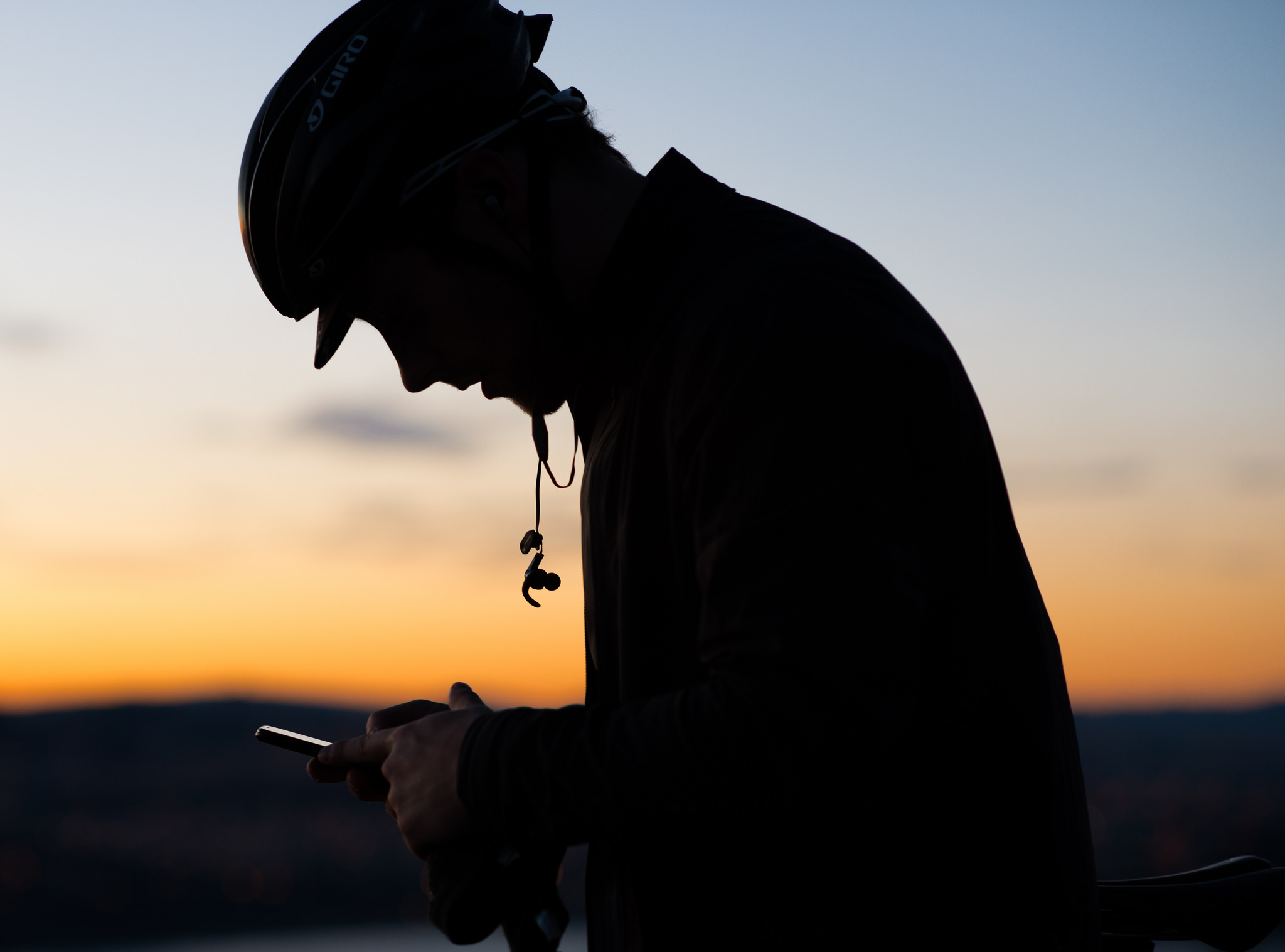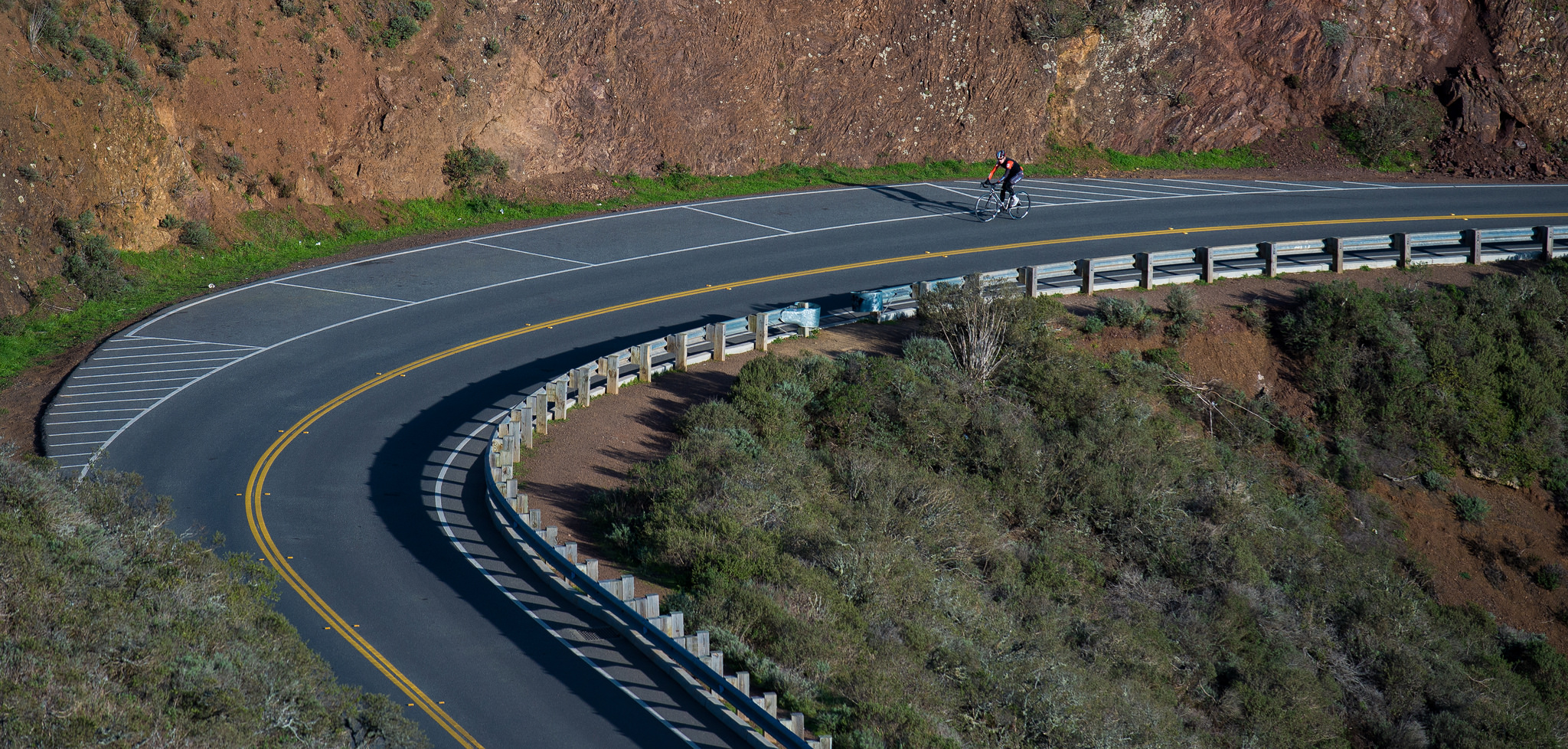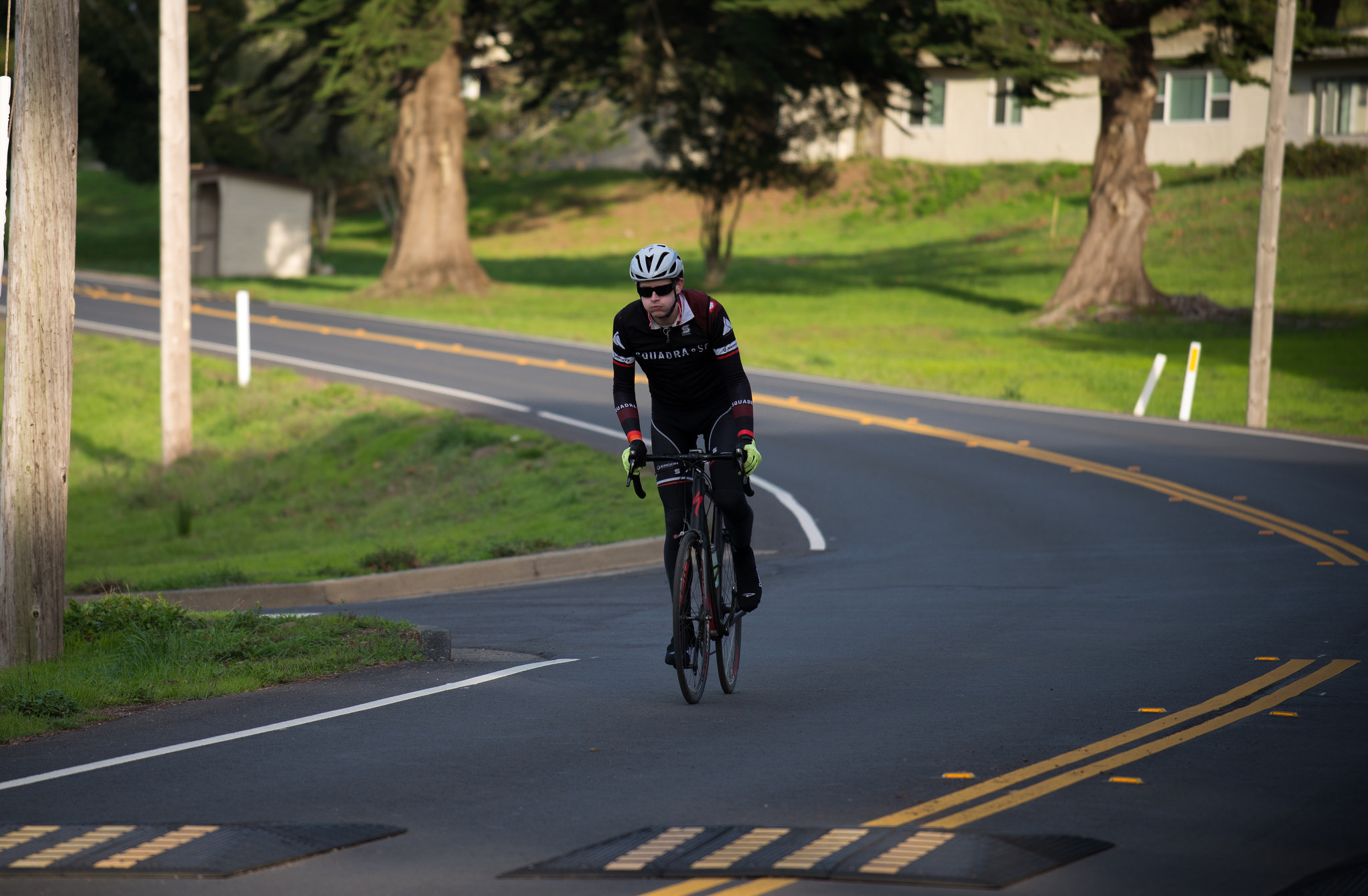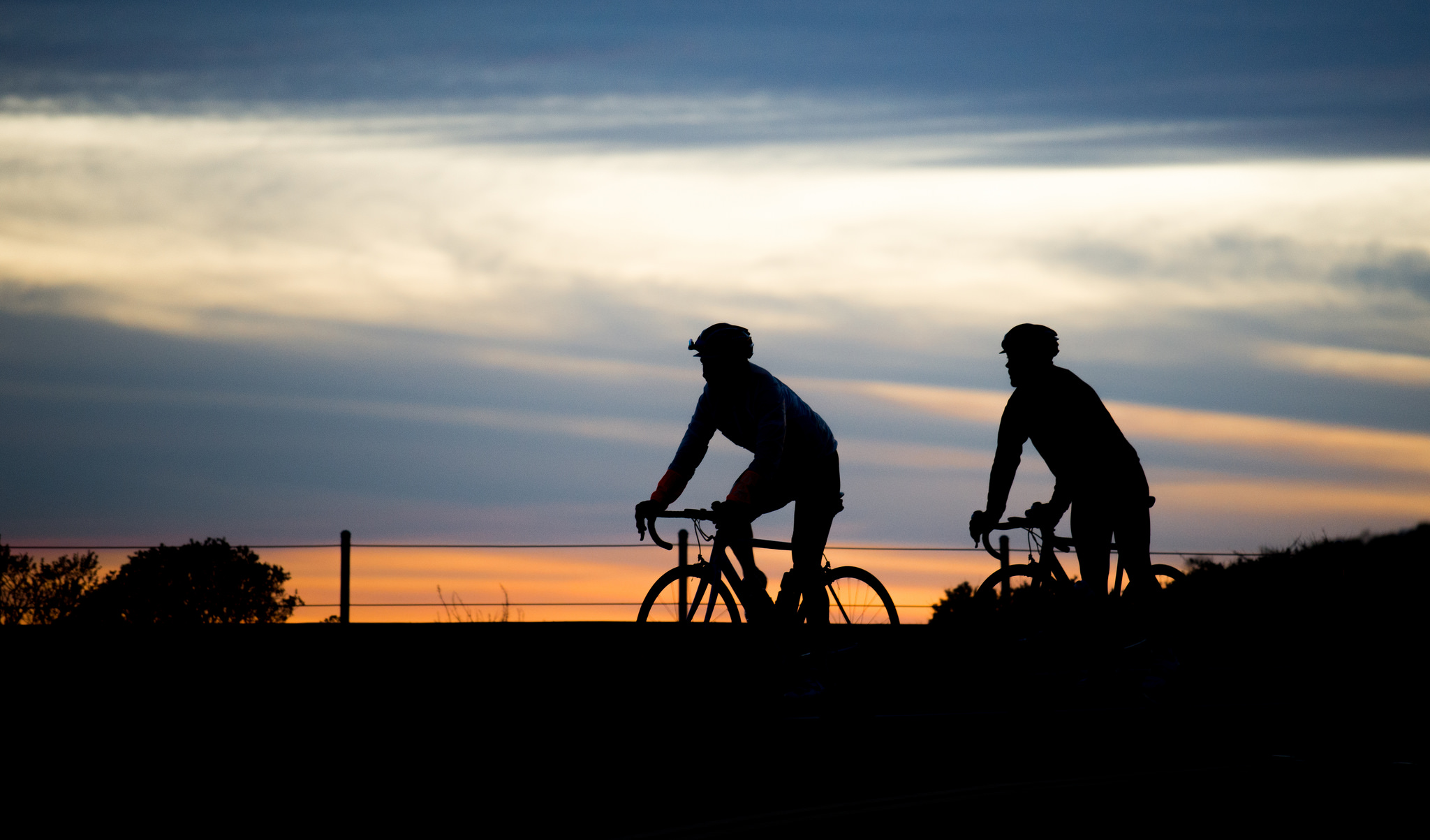This past Saturday, three coworkers decided to take on one of the most brutally idiotic cycling challenge ever invented: Everesting. As the name implies, this is about elevation. And the rule is rather simple: accumulate, in one ride, the elevation of Mt. Everest. 8,848 meters of pain or, for my less metric-inclined friends, 29,028 feet.
They settled on Hawk Hill for the location. It’s a benchmark segment for riders in the area, known for its bautiful vistas of the Golden Gate Bridge, San Francisco and the Marin Headlands. It took them just shy of 50 reps and slightly over 16 hours to accomplish the feat – that’s riding time only, mind you. A full post is expected to drop on the Strava blog soon, so I won’t spoil it too much. I did go twice over the bridge that day to capture a bit of their achievement.




The full gallery is here.
Just about a year ago, I entered a CrossFit gym for the first time. Like everyone, I had heard about CrossFit as the ultimate workout and I had seen the images of ripped guys flipping tractor tires and doing pull-ups up as if they are in zero-G. I had been curious about it for a while and I had looked up a couple of gyms in the city. It’s a serendipitous find of CrossFit PH on my way to work that achieved to convince me I should give it a try.
At the beginning of 2014, Strava’s marketing team asked employees to list their fitness goals for the year. I remember writing: “12 Gran Fondos, 1 pull-up”. Biking is easy for me but I have never been able to literally pull my own weight up, regardless of how much I lost. For the past two years, I averaged 5,000 miles on my bike and I’ve tried to run about 1 hour every week. It’s a pretty high volume but these activities focus on specific muscle groups and motions. I was looking to bring back a balance in order to consolidate my fitness.
On my first intro class to CrossFit, Alexis made us do an 8-minute WOD which consisted of three moves: pull-ups, squats and push-ups. At the end of it, I was lying on the floor, panting and feeling exhausted. Alex helped me up and said “for just 8 minutes, you were fighting against nothing but the weight of your own body”. This struck a chord with me. I can ride for a hundred miles or run a half-marathon in about 2 hours – how can those simple movements make me so tired, so quickly?
I made a habit of going to the gym twice a week. I haven’t always been able to keep up with the schedule but that was the goal. from the beginning, I really liked that every workout happened in a group. Unlike a regular gym where you’re left on your own deciding what to do, CrossFit workouts happen in groups and there’s a program to follow for an hour – starting with a session focusing on strength or skills then moving on to the WOD. Most WODs are timed and everyone does them at once. Sometimes you get paired with someone else – to spot them on the bench or alternating activities during a WOD (“I’ll trade you 500m on the rower for 1 minute in an L-Sit”). It creates an atmosphere of companionship.
I more or less managed to stick to my plan throughout the year. Did I become ripped? Absolutely not. Some of my muscles are very slightly more toned than last year and I have flipped a tractor tire a bunch of times, but that is as far as I will fit into the CrossFit stereotype. A year later, my CrossFit performance is still very mediocre. Every day, attendees of the gym write down their results of today’s WOD on the whiteboard, publicly visible to everyone else. On a regular basis, I’m in the 20th percentile of men and that’s by modding the WOD down – using lighter weights than prescribed or using helpers such as bands to do pull-ups.
On the other hand, a look at the rest of my 2014 athletic performance shows very clear signs of improvements, year-over-year:
- In June, I rode from San Francisco to Los Angeles with the AIDS/LifeCycle. It felt easier and was faster than the two other times I had done it before. The ALC stands diametrically opposed to a race but there’s an inevitable pride in finishing in the first 10 of 2,500 riders on a long day.
- In February, I ran the Kaiser Half Marathon in just over 1:53 — a 5 minute improvement over my 2013 performance. In September, I ran the Giants Race in under my stretch goal of 1:45. That’s an 11% improvement in 18 months.
- A few days later, I ran the San Francisco JPMCCC in 24:10 – again, 11% faster than my 2013 time.
- Late in August, I beat my previous personal record for longest ridden distance by about 30 miles. It was exhausting, but I don’t think I could have done this just a year before.
Did CrossFit help? It’s hard to say. I was a Training Ride Leader for 9 months before the ALC and the sheer volume of distance and time must have helped building a good baseline. On the month leading to the Giants Race, I increased my running volume to a sustained rate that was higher than ever before: I ran 25km each week for 4 weeks. It’s hard to tell apart the result of focused training and that of the CrossFit baseline.
On Thanksgiving Day, we did an outdoor WOD called the monster mile: 10 intervals going up the 1/10th of a mile on Wisconsin St. between 19th and 20th St — a 13% incline that you have to climb and go back down in under 3 minutes each time. That was not easy but I was surprised how much everyone in the group was struggling. Struggling a lot more than me.
And that’s something I learned this year: the huge gap that exists between strength and condition. I’m not fit to bench 200 lb like most of the folks at the gym. Heck, I’m still struggling to do just 5 push-ups. But the point is: pumping iron is far from being all I do. And while I think CrossFit helped me train new muscle groups and develop strength where I didn’t have much (if any) before last year, the point is that I really reaped the benefits of my work by keeping up with cycling and running.
Last week, I arrived to the gym 10 minutes before the class started. I stretched and warmed up for a bit and still had a couple of minutes to spare. So I went to stand under a bar and looked up. I hadn’t tried for months but I felt like the year is closing in fast and I should start being serious about the second of my 2014 goals. Jump, grab the bar, inhale and pull… And just like that, my chin is over the bar! Sign me up for another year.
I don’t like Uber very much. Well, not anymore. The first time I heard of them was right at the inception of the service in San Francisco. I didn’t even live in the city at the time but I had heard good feedback from gay, queers and transgender people that Uber was, if not a solution, at least a positive change for them. Because it was (and still is) a luxury service that was made available at the tip of everyone’s fingers – “everyone’s private driver”. To groups that are frequently victims of discrimination and violence, Uber was a guaranteed way to be picked up anywhere at any time, hence limiting the time you would normally spend trying to hail a cab in an unknown neighborhood.
My esteem for Uber has gone downhill from there: misogynistic ads, open threats to journalists and shady business practices in cities like Portland are just few of the many ways in which Uber is routinely operating these days. That’s not even to mention creepy or outright violent drivers. It’s really hard (or not) to believe a company valued at $40B could operate in such a fashion. Uber has become the symbol of how businesses that call themselves ‘disruptive’ end up being more abject than the ones they are supposed to replace.
This morning, I woke up to the news that Sydney was in practical lockdown due to a hostage situation in the CBD. The news was heavily discussed and spread on Twitter. And on more than one occasion, people in my timeline were retweeting a screenshot of the Uber app showing a surge pricing in effect at 4x.
This is more than just about supply and demand. Sure, there probably wasn’t a lot of drivers willing to be driving around Sydney CBD – which is likely why the surge kicked in.
On the other hand, if your contingency plan during a hostage crisis is to expect Uber to pick you up and drive you to safety, I just don’t know what to say. In now way should Uber be responsible for the safety of anyone because they’ve shown pretty badly how much they suck at it. It’s irresponsible to hold them to such a standard when they not only have no duty to act in such a capacity, but also when they have demonstrably failed to ensure the basic safety of users.
If you feel unsafe and want to be evacuated, call the police. Granted, they were probably busy with other things in Sydney this morning but, you know, life’s tough. If you have time to complain about surge pricing on social media, your life was not in immediate danger – and it’s a shame to put your discomfort of having to walk on an equal standing to the suffering of the people who were directly involved in this morning’s events.
What should Uber have done? Prevent the surge, block multiplier at 1x to deter drivers from driving and make room for actual emergency services where they were most needed. Yes, they should be ready to respond to such situations very fast and it looks like they didn’t. Ultimately, the damage is purely on Uber’s side and it’s primarily a PR issue. So, unless your job is head of the comms team at Uber, there’s absolutely no reason to be angry about what just happened – and the same could be said about most times people are outraged regarding surge pricing.



